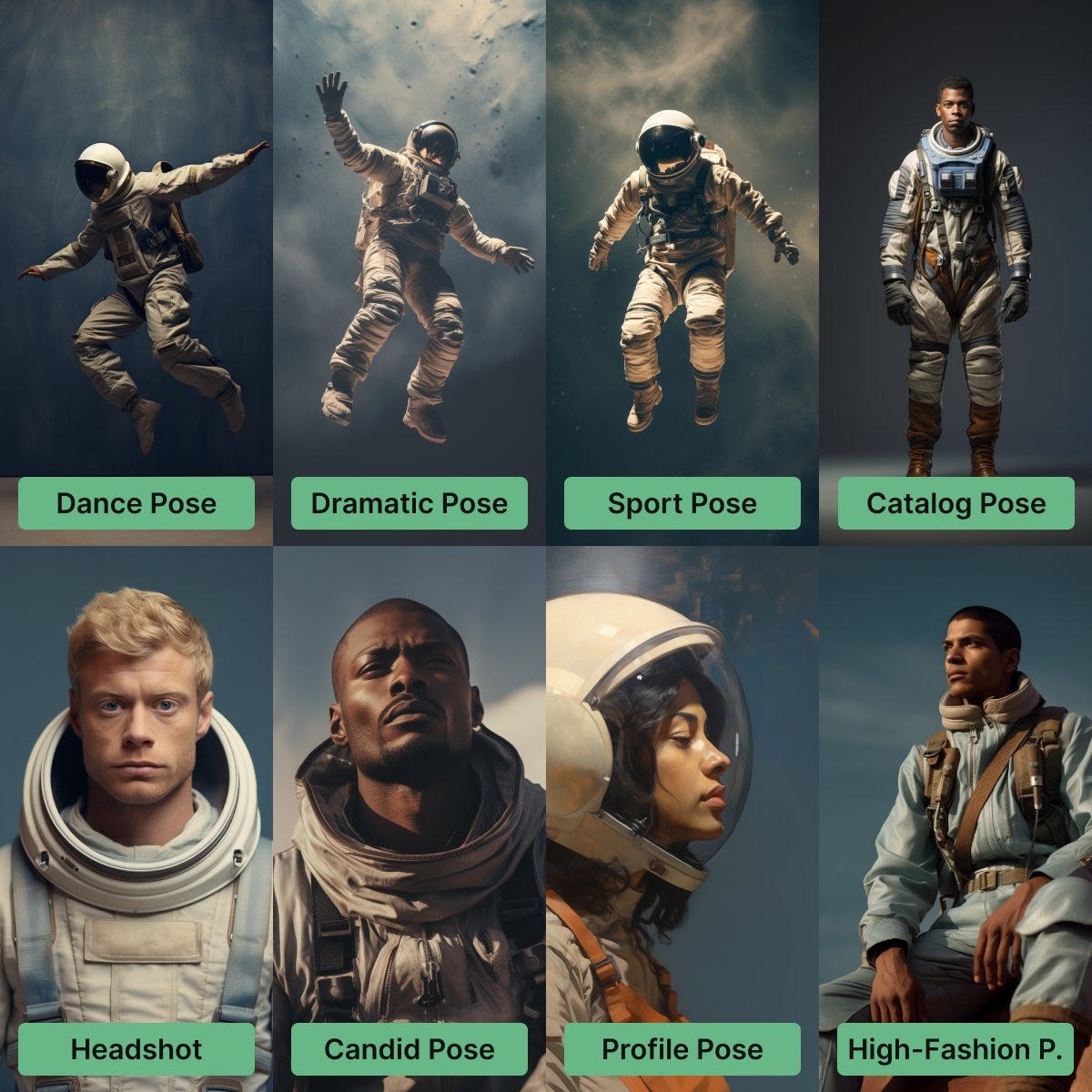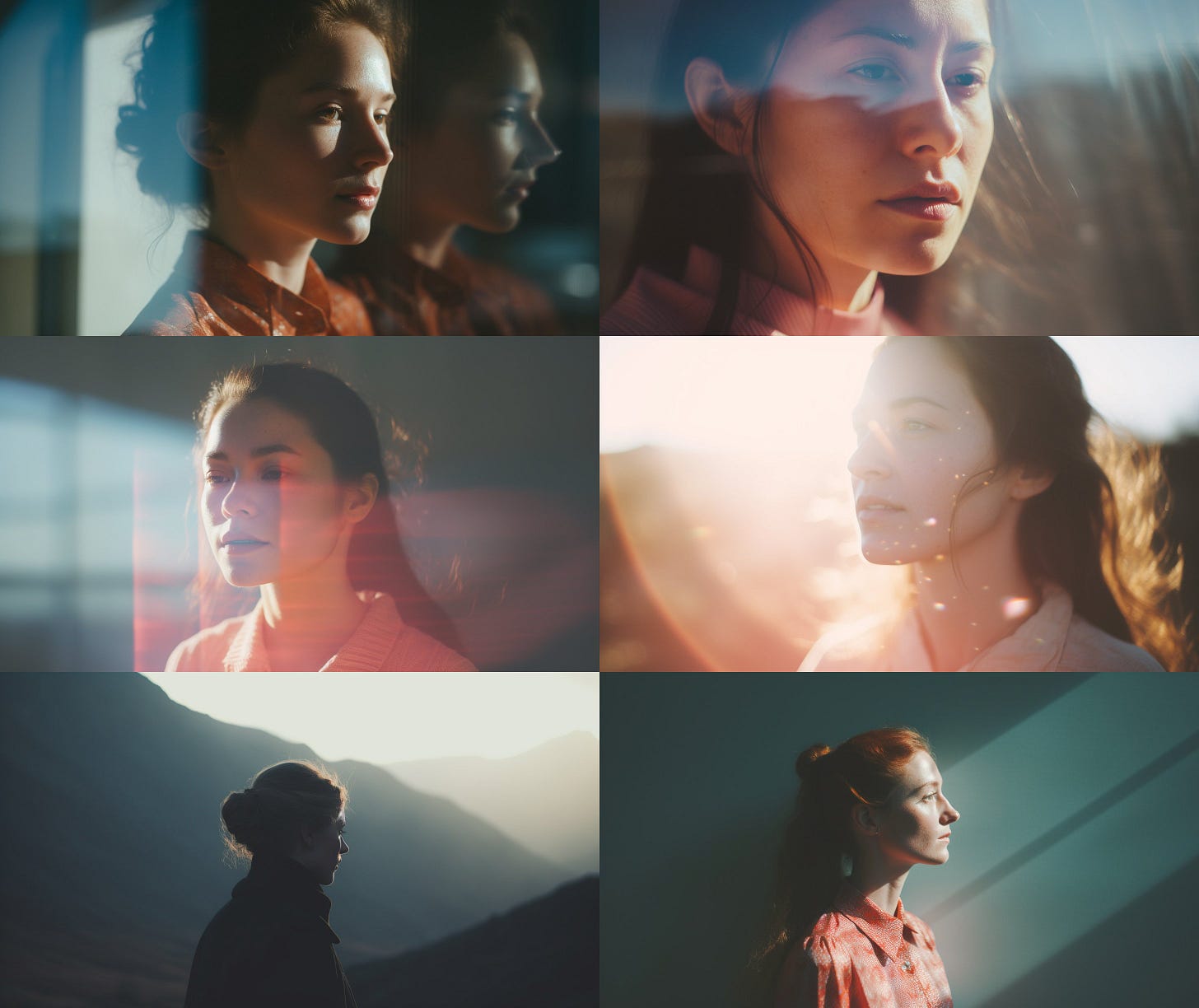How to Master Composition in MidJourney: Camera Angles, Poses, and Optical Tricks
Use these methods to take control of your compositions.
Control the Composition in MidJourney with Camera Angles
After using MidJourney for over a year and diving deep into online resources, tutorials, and best practices, I've picked up a few tricks to elevate my AI-generated art. Whether it's about nailing the perfect camera angle, finding the right pose, or adding optical effects, these techniques have helped me refine my work and make it stand out. Here's a breakdown of what works for me and how you can use these methods to take control of your compositions.
When I want a specific composition in MidJourney, I lean on camera angles inspired by photography. These tokens help me shape my visuals:
Macro: Perfect for zeroing in on tiny details.
Close-up: Brings the subject up close and personal.
Wide Angle: Captures the bigger picture with more context.
Diagonal Angle: Adds energy and movement to the frame.
Aerial: A bird’s-eye view for layouts or landscapes.
High Angle: Looks down, emphasizing scale or vulnerability.
Low Angle: Shoots upward, making subjects feel larger-than-life.
Oblique Angle: Tilts the frame for a bit of tension or drama.
These work best with photo-realistic objects. Exotic or fantasy subjects? Hit or miss. But for me, they’re consistently solid.Poses in MidJourney
Getting the right pose can make or break an image. These tokens are my go-tos:
Dance Pose: Captures flow and movement.
Dramatic Pose: Perfect for storytelling and intensity.
Sport Pose: Energy and action in one frame.
Catalog Pose: Clean and neutral—great for showcasing products.
Headshot: Keeps the focus on facial features.
Candid Pose: Natural and unposed vibes.
Profile Pose: A side-on view for a different perspective.
High-Fashion Pose: Bold and avant-garde.
Note: Like anything with AI, these don’t always hit the mark. It all comes down to the prompt and a little luck.Photography Optical Phenomena in MidJourney
Want to make your images pop? Try weaving in these optical effects:
Reflection: Adds depth with mirrored surfaces.
Refraction: Think light bending through glass or water.
Diffraction: Light patterns that add an ethereal touch.
Lens Flare: Those streaks of light for a cinematic feel.
Atmospheric Perspective: Depth through haze and distance.
Light Falloff: Realistic dimming of light over distance.
Understanding and combining these techniques gives you more control and makes your AI creations look intentional. Happy experimenting!





Wow!! Love this.